MLB Minor League System Rankings – The Middle

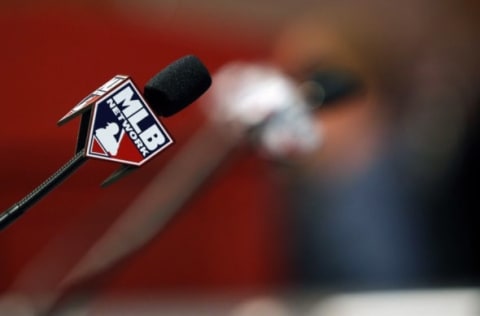
After counting down the top ten prospects for every organization in MLB, who ended up in the large middle section of this list?
An Introduction
Call To The Pen contributor Benjamin Chase has released his top 10 prospects from every minor league system over the last month or so, and he’s put together some research into each minor league system through contacts in the game, reading reviews from other reports, and his own research and reviews.
He has taken the 30 minor league systems and ranked them from #1 to #30. Currently, the way they break down, in Ben’s eyes, there are 7 elite systems, 7 “ugly” systems, and 16 that sit firmly in the middle. That doesn’t mean that a team in the bottom couldn’t move up through a few trades by the end of the offseason, as one of the teams that would have been in the “ugly” portion is now in the “elite” section after offseason trades. Teams can also jump up quickly into that elite group as only two of the the 7 teams in that elite group would have been considered elite just one year ago at this time.
These rankings take into consideration four main factors in rankings – elite prospects, system depth in legitimate prospects, proximity to majors of legitimate prospects, and system reputation for developing their prospects into productive major league players.
Before we get into this dispatch of the list, let’s take a look at the stats on how the list ended up distributed among the divisions…
Best average ranking: NL Central, 11.6
Most teams in the top 7: Tie – NL West and NL East, 2
Most teams in the bottom 7: Tie – AL Central and NL West, 2
This was a lot of fun to put together, and after the first of the year, we’ll be releasing a top 125 prospects in all of baseball from Ben as well, so be looking for that!
Today, we’ll look at the middle 16, so there are lots of teams to come, so strap in, and here we go!!
Next: #23
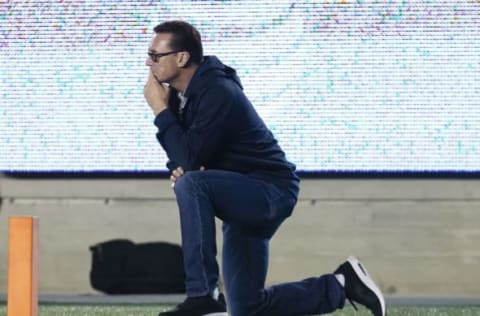
23. Oakland Athletics
The A’s have been known for having their own quirky preferences for players, but their current roster and system may be the most perfect way to see the mix of their quirks.
The Athletics have guys with elite tools and age-relative-to-level. They have guys who are much older than their levels that are putting up major numbers due to hitting leagues. They have pitchers with big stuff. They have pitchers who are more a result of their “pitchability” than their raw stuff. It’s a very weird mix of players that really don’t seem to fit one direction.
While the team has produced some big players like Josh Donaldson recently, they’ve also struggled to bring the best out of big prospects they’ve had in their own system.
Elite prospects – I did consider quite a few Athletics for the top 125 list, however, only one really factored into the top 50. A few factored in from 50-100 and a couple more will be from 100-125, but it seems after #7-8 in their system, it drops off extremely fast in quality.
System depth in legit prospects – As mentioned above, the quality of player drops off extremely fast in the A’s system from a guy who could be a legit major league contributing player to suddenly a guy who would struggle to even be a bench or bullpen piece for a floor.
Proximity to majors of legit prospects – The A’s do have six of their top 10 that had reached at least AA in 2016, and two even reached the majors. I think they’ll likely see at least four of them with some extended time in the big leagues in 2017.
System reputation – The Athletics do have a reputation in the business as working very well with the guy like a Max Schrock – a guy who has just enough baseball skills to get by, but has a ton of baseball instinct and “grit”, but they also have a reputation for struggling to get the most out of a guy with truly elite talent.
In their defense, the A’s really haven’t had many guys like that in their system as of late, and the ones they’ve had have moved through their system quickly. Right now, they have big talent bats like Barreto and Lazarito along with big talent arms like Puk, Holmes, and Montas, so it should be interesting to see how this reputation works out.
Top 5 Born 1991 or since (age 25 season this year)
1. Sean Manaea
2. Franklin Barreto
3. Ryon Healy
4. A.J. Puk
5. Grant Holmes
Next: #22
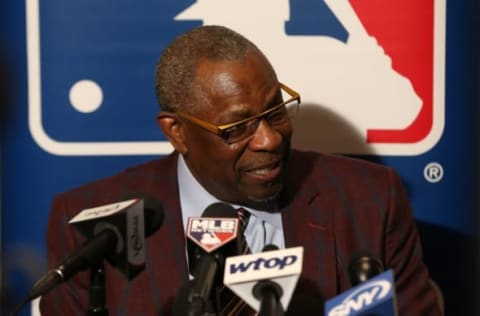
22. Washington Nationals
The Nationals pushed hard for their 2017 and 2018 teams by trading away a lot of their best minor league pieces for players for the 2016 run along with trading for outfielder Adam Eaton. They’re also reportedly still looking for more pieces and willing to move guys to do that, so they could see themselves fall down this list further if they thin out their system farther.
However, it’s hard not to take note of a few things the Nationals have done well recently that should keep them from the bottom group of the rankings – grab excellent Latin players like Robles and Juan Soto, develop back end rotation depth like Tanner Roark, A.J. Cole, Austin Voth, and more, and work guys from Tommy John surgery like Lucas Giolito before he was traded and Erick Fedde.
Elite prospects – I only considered three players for my top 125 from the Nationals, which was half of what I originally considered from their system before trades, but one of those is a top 10 overall guy, so that automatically helps a system.
System depth in legit prospects – While there are not a ton of guys who profile as legit every day infielders right now outside of a ridiculous amount of depth in third basemen in the system (seriously 4 of them on my top 10 list), the team does have two high end outfield prospects along with a number of guys who project wella t the back of a rotation.
Proximity to majors of legit prospects – The Nationals saw only three of their top 10 make at least AA in 2016, but one contributed to the major leagues, and all three who were at AA should see some major league time in 2017.
System reputation – The Nationals have developed a good reputation for finding and developing Latin bats, though they tend to do a lot of swing-and-miss in that market, spreading a wide net and seeing who rises from the crop each year, which isn’t exactly a bat method.
On their pitching, the Nationals have received some criticism from some sources for the struggles of Giolito, but their same approaches really allowed Reynaldo Lopez to turn the corner from thrower to pitcher in 2016, and it’s allowed Fedde to add in innings in his TJS return. Many are very confident in the ability of Jesus Luzardo in reaching his ceiling coming back from TJS in the Nationals system as well.
Top 5 Born 1991 or since (age 25 season this year)
1. Bryce Harper
2. Trea Turner
3. Joe Ross
4. Victor Robles
5. Michael Taylor
Next: #21
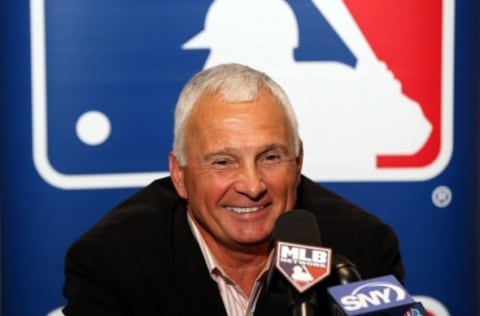
21. New York Mets
The Mets rode a young starting rotation to their 2015 World Series appearance, but they found the downfall of relying heavily on young arms in 2016 when those young arms had injury struggles and were not able to carry the team back to the postseason.
The Mets have struggled to produce a consistent outfield run producer or a shortstop for years, but interestingly, they have both right now ready at the major league level or knocking on the door. Add in that their #2 prospect may possess the power they also seem to lack consistently, and the Mets might just be getting their major league team on track.
The big issue is that the Mets were willing to trade away a ton of the their system in pursuit of that 2015 pennant, and they saw one of their former pitchers win the rookie of the year as well as multiple others make their major league debuts, all while the Mets were struggling to find quality arms to fill innings.
Elite prospects – Rosario is one of the best in the entire game, and I had two others in consideration for my top 125. I’m watching a couple other guys in the Mets system as there are injury concerns that keep two guys down now that could jump up fast by midseason.
System depth in legit prospects – This is the big issue for the Mets. Right now they hit a big drop off after their top five or six prospects. Big injury risks or very low floors abound in the guys below that mark in the Mets system right now, and that is what keeps them at this point in system rankings.
Proximity to majors of legit prospects – Four of the top 10 made at least AA in 2016, with two of those four playing in the major leagues. It remains to be seen how fast any of the rest move up the system.
System reputation – The Mets have struggled with their reputations on developing players, especially defensively. They do have a few excellent defenders in their top 10 right now, and it remains to be seen how they finish that development with those players, but that has been a bugaboo with the major league club both in the infield and outfield.
The Mets have an excellent reputation with pitching, and they saw guys like Seth Lugo and Robert Gsellman come up to the big leagues and have success on the major league roster while not being highly regarded prospects, so there are guys who could definitely surprise that are off the radar currently.
Top 5 Born 1991 or since (age 25 season this year)
1. Noah Syndergaard
2. Steven Matz
3. Amed Rosario
4. Michael Conforto
5. Wilmer Flores
Next: #20
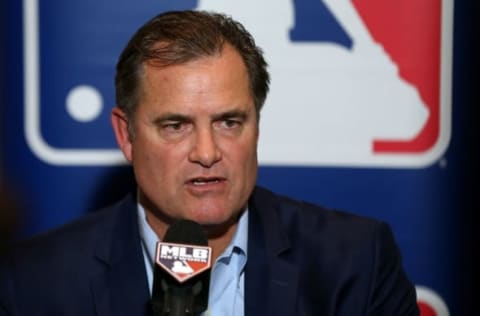
20. Boston Red Sox
Coming into the offseason, I had there being four tiers of minor league systems, with the Red Sox being part of the second tier, but after major trades, they’ve chopped off a chunk of their minor league system. However, they have still left plenty of talent in the pipeline.
The Red Sox still have a top 5 overall prospect, another top 25 overall prospect, and still have a lot of depth in their system that is a ways away that could leap up this year with the opportunity opened up by the moves made this offseason.
Elite prospects – The Red Sox arguably had the #1 and #2 prospects in the game before their Chris Sale trade, but they still have one of those guys. They have another guy who’s a top-25 guy. There are two other guys I considered in the top 125 as well. A couple of other guys are raw, but they have the talent for sure to get there.
System depth in legit prospects – The Red Sox have a number of guys who are no longer technically rookie eligible, so they’re not on prospect lists, but they’re legit major league caliber players, but they’re just not the type of guys that the Red Sox needed at that moment, guys like Henry Owens and Eduardo Rodriguez.
Proximity to majors of legit prospects – As mentioned previously, a number of guys are already at the major league level or have exceeded their rookie eligibility. The top prospect will be starting in Boston’s outfield this season. The Red Sox should have a very solid AAA team overall.
System reputation – The Red Sox have the reputation of having a lot of roster space in the DSL and GCL to bring in a ton of players and let the best rise to the top and move up in the system, which is why you typically see guys in their full-season teams get plenty of press, because often those guys have surpassed so many other players just to get that far.
That competition is both a blessing and a curse for the Red Sox. Part of the problem is when you have guys like Rodriguez/Owens/Brian Johnson who will likely make up a AAA rotation and not really get the chance to build themselves up and get major league chances that they need to continue their development. That happens down the line as well as there are players holding back other guys who are ready for that next step at times and the Red Sox have been known to hold back some guys just a touch.
Top 5 Born 1991 or since (age 25 season this year)
1. Mookie Betts
2. Xander Bogaerts
3. Andrew Benintendi
4. Blake Swihart
5. Rafael Devers
Next: #19
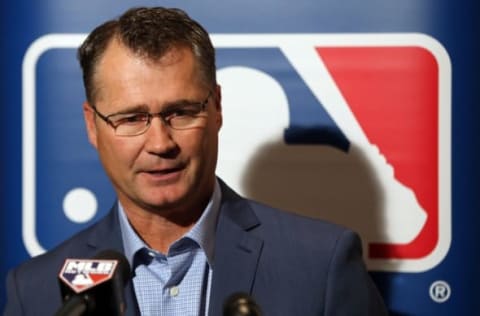
19. Seattle Mariners
With the Angels, Jerry Dipoto had a bad reputation for his minor league system, but perhaps we’re seeing that the poor reputation was not entirely his doing.
Once he was brought in as GM, Dipoto made some very positive changes in the Seattle minor league system from top to bottom, making an emphasis on individual player development over a system-wide approach, something that had plagued the Mariners previously.
This has brought about some quite impressive steps forward from many players in the Mariners system, and the Mariners actually had the highest winning percentage across their minor league system of any system in baseball this season.
While minor league winning percentage isn’t a purely one-to-one relationship with major league winning, there is some very solid evidence that teams that start to see success in their minor league system see that success translate to the major league level.
Elite prospects – The Mariners have one real elite guy in their system, but through a number of trades, they’ve acquired a group of guys that have the ability to be elite performers, and they’ve seen guys within their system who have elite talent begin to show that talent.
System depth in legit prospects – The Mariners have a number of guys in their top ten who could translate into legit major league contributors. In fact, I stated that exactly about the #7-10 ranked players in the system that each should have a chance to be a major league contributor.
Proximity to majors of legit prospects – Those legit prospects are also making their way to the major leagues. Of the top 10, 3-4 should compete for major league jobs in spring training, and even the top prospect should be seeing a major league call up for September of 2017 most likely.
System reputation – Before Dipoto came to town, the Mariners were known to have a hitting system and a pitching system. Whether the players matched or not, they were seemingly forced into that methodology.
The Mariners have seen big strides with James Paxton, albeit at the major league level, and D.J. Peterson, who has elite raw hitting talent, with their more individualistic approach that focuses on helping each player on his personal skills rather than forcing an approach on him.
Top 5 Born 1991 or since (age 25 season this year)
1. Edwin Diaz
2. Mike Zunino
3. Tyler O’Neill
4. Luiz Gohara
5. Kyle Lewis
Next: #18

18. Cincinnati Reds
The Reds are now in year 3 of a rebuild of their system, but they still have some big major league chunks attached right now to their payroll, specifically Brandon Phillips and Joey Votto. They only just got Jay Bruce off the payroll at midseason as well.
While the Reds have had more difficulty moving their larger contracts than other teams entering a rebuild phase, they have had some solid returns when they have finally been able to move their major league pieces. Their return for Johnny Cueto was very solid and should help the pitching rotation for quite some time.
Cincinnati made one of the more shrewd post-draft moves this year in getting T.J. Friedl for a very reasonable deal after they discovered he was actually draft-eligible. Friedl very likely would have been in consideration for a number of teams as soon as the second round, but the Reds got him for a late-third round bonus.
Elite prospects – Right now, the Reds biggest “stud” players are guys acquired this season in the international arena and through the draft. They do have six players I considered for my top 125.
System depth in legit prospects – The big issue for the Reds is their depth in guys with a legit future. Right now, the Reds have a number of guys with a significant difference between their ceiling and floor. There are guys with high ceilings, but those guys just haven’t shown enough yet to be sure of their future enough to consider them for future plans.
Proximity to majors of legit prospects – The majority of the top ten played in rookie ball or was an international signing in 2016. Only one made a major league appearance and three reached the upper minors. That’s very true of the entire minor league system right now as the majority of the talent is either at the major league level already or at lower levels, not much in between.
System reputation – The Reds have done a solid job of getting pitchers in their system to the major leagues, but thus far, they’ve seen a number of those pitchers struggle to remain starters in the major leagues, ending up more as bullpen pieces.
The hitting side has continued to produce a number of solid options from guys who were not exactly highly regarded prospects, so a number of guys could end up producing that have not shown up yet.
Top 5 Born 1991 or since (age 25 season this year)
1. Brandon Finnegan
2. Eugenio Suarez
3. Nick Senzel
4. Jose Peraza
5. Dilson Herrera
Next: #17
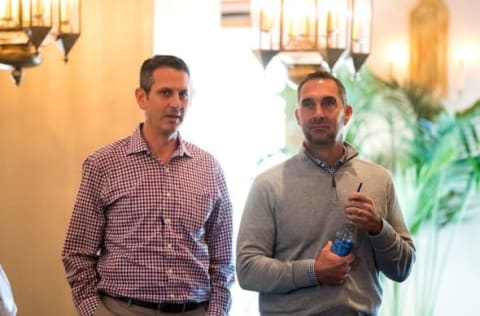
17. Minnesota Twins
After a solid showing from their young players in 2015, the Twins saw a significant step backward in just about every possible facet of the team in 2016.
The Twins had two of the brightest young hitters in the game in Miguel Sano and Byron Buxton entering 2016, but they saw Sano struggle defensively and Buxton struggle offensively until he returned for an impressive September display of offensive prowess.
Their pitching was hurt and/or ineffective outside of rotation stalwart Ervin Santana. As the Twins look to jump start their rebuild even further, Santana could be a viable trade chip along with Brian Dozier to help really push forward the talent in the system.
Elite prospects – Right now, there isn’t really a top 10 guy in the system like the Twins have enjoyed for the last few years, but they do have a handful of guys I considered for the top 125.
System depth in legit prospects – The Twins have done well in shifting their organizational pitching focus, and some of those guys are starting to show signs of being a mid-rotation floor. The offensive pieces are primarily at the major leagues already.
Proximity to majors of legit prospects – The Twins graduated a lot of players to the major leagues in the last few years, with their entire outfield and at least 2 other spots in the lineup likely being guys who were in the system within the last 3 seasons. That’s left the upper levels rather depleted of talent, but there are still some solid overall players throughout the system.
System reputation – The Twins have been doing very well in developing back end rotation pieces and bullpen guys on the pitching side, but they’re working a new organizational philosophy to develop more high-velocity starters like Tyler Jay and Kohl Stewart into front line guys.
On the hitting side, the Twins have done well seemingly getting defensive specialists or defensive liability mashers and seemingly not a ton in between. Guys like Max Kepler, Eddie Rosario, and Byron Buxton give them the chance to have guys who can provide both offensive and defensive value.
Top 5 Born 1991 or since (age 25 season this year)
1. Byron Buxton
2. Miguel Sano
3. Max Kepler
4. Eddie Rosario
5. Jose Berrios
Next: #16
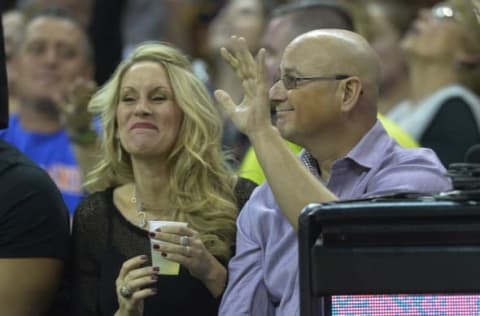
16. Cleveland Indians
The Indians finished just short in one of the most exciting game 7’s of a World Series in history, certainly the best since the 1991 Twins/Braves finale.
They got to that spot due to an excellent pitching staff and timely hitting, gained from excellent development in their farm system. Their best player on their team is from their system, and multiple players were the results of astute trades over the years to mine the systems of other teams, bringing in players like Michael Brantley, Corey Kluber, Carlos Santana, Carlos Carrasco, and Trevor Bauer.
The Indians have seen a lot of their high end talent either come to the majors as part of this current roster or used in trade to acquire talent like Andrew Miller, so what was a system that would have been a top 10 system a few years ago is now more in the middle of the pack, but that certainly doesn’t mean the pipeline is dry.
Elite prospects – The Indians had 5 players I considered for my top 125, including 2 that were comfortably inside the top 50 of prospects.
System depth in legit prospects – This is where the Indians excel, even after trading away big chips like Clint Frazier and Justus Sheffield. There are a number of players with high floors throughout the system, both in position players and in pitchers.
Proximity to majors of legit prospects – The Indians have a mix within their top 10 list of 4 guys who have played in the upper minors and three who played most of their year in rookie ball, so it is a blend, but as you get beyond the top 10, they do have a good amount of guys in AA/AAA that are ready to contribute in at least a bench/bullpen fashion.
System reputation – The Indians development reputation is one of the better ones in the game, both in hitting and pitching. They have done well working with hitters who are based on speed in their game. They have done well with mashers. They have done well with fire balling pitchers. They have done well with command and control types.
Really, the Indians have shown an ability to adapt their instruction to the player coming into the system, which is why so many of their players become highly desired as they reach the upper minors due to minor league success, at least statistically.
Top 5 Born 1991 or since (age 25 season this year)
1. Francisco Lindor
2. Trevor Bauer
3. Jose Ramirez
4. Tyler Naquin
5. Bradley Zimmer
Next: #15
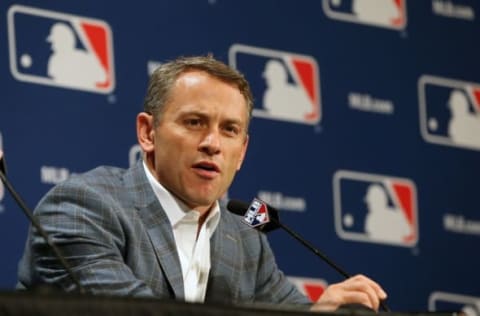
15. Chicago Cubs
The Cubs used one of the strongest farm systems in baseball to build the team that finally broke through and won the franchise’s first World Series in over 100 years.
The top 5 list at the end of this post is all guys who will have every day roles in the lineup in 2017, yet the Cubs have guys who are integral parts of the bullpen, rotation, and bench that have been developed in their system as well.
On top of that, the Cubs also have one of the best prospects in the entire game in Eloy Jimenez, though beyond him, their system thins out quickly.
Elite prospects – As mentioned, Jimenez is one of the elite prospects in the entire game, and there are two other players I considered for my top 125, so this is an area where the Cubs are a touch more shallow than they have been in a number of years.
System depth in legit prospects – While their elite prospects are possibly lacking, the Cubs are developing a number of pitchers who profile as impact relievers, starters who profile in the back of a rotation, and hitters who should be a solid contributor in the major leagues. These players may not find their way into the Cubs’ plans, but as trade chips they can be quite valuable as well.
Proximity to majors of legit prospects – The Cubs saw two of their top 10 prospects in AAA this season and half should be in the upper minors this season. However, their highest-regarded prospects are still at least three years away.
System reputation – The Cubs have built a sterling reputation, whether on the overwhelming talent they had in the system or on the merits of excellent development is a debate you’ll get from a number around the game, but regardless, it’s worked to produce a number of solid players for their big league roster.
One of the things notable in the Cubs playoff run in 2016 was the success of Kyle Hendricks, and the development of pitchers with more pitchability than pure stuff is one of the things the Cubs have been noted for by people I’ve talked with, so Hendricks is their most shining example of this, but there are a number in their system that have done much better so far than raw skills on the mound would have suggested they would do.
Top 5 Born 1991 or since (age 25 season this year)
1. Kris Bryant
2. Addison Russell
3. Javier Baez
4. Kyle Schwarber
5. Willson Contreras
Next: #14
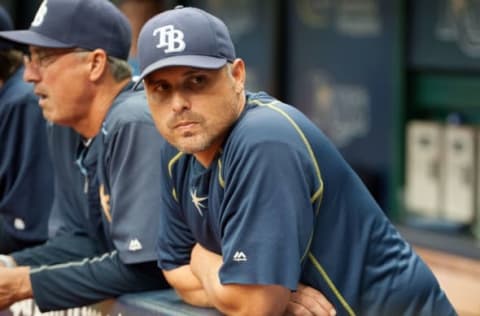
14. Tampa Bay Rays
The Rays were a minor league system media darling for a significant time in the mid- to late-2000s, when it seemed they had a factory of elite players coming through their system.
Upon closer look, it was evident that the players were a significant result of early draft positions, and as the team saw more success, their drafting and international work suffered, and the Rays system began to dry up significantly.
With Andrew Friedman moving to the Dodgers, the Rays revitalized their focus on the minor leagues, spending significant money on development, on international talent acquisition, and on scouting for the draft.
This has produced some very good drafts and some elite prospects, but more than anything, it’s given the Rays a very deep system of high-ceiling talent right now. High ceilings often mean high rate of failure, but the ones who do hit big tend to hit real big and be elite players, so that approach to drafting and international signing has really put excitement into the system.
The Rays affiliates have now become must-see TV on the milb.tv app due to their high-ceiling players. It’s remarkable what you may see a guy like Adrian Rondon or Lucius Fox do on a given night with their incredible athleticism.
Elite prospects – The Rays have a few prospects that I’ll be considering among the top 75 within my top 125 and six guys I considered for the top 125 overall. That doesn’t include players like Rondon and Fox, who are some of the most gifted athletes in the system and could easily leap forward by midseason.
System depth in legit prospects – The Rays have a mixed bag here. While there are some very solid pitching options near the majors and some of the hitting options are starting to set a baseline, much of the system is still very high ceiling, low floor type of players.
Proximity to majors of legit prospects – The Rays have seen great progression in the last 12 months of their best prospects, and currently four of their top five prospects have reached the upper minors and six of the top 10. It’s very likely they’ll see 2-3 of those players in the majors this season.
System reputation – The Rays had a reputation that outpaced reality for a long time in their talent acquisition, and it began to show as the talent stopped being as great and therefore the results were no longer as spectacular.
They’ve revamped things throughout their farm system, and the players in the system talk about how much more loose things are now than just a few years ago, how guys are treated like individuals, not pieces to a bigger puzzle. That has certainly led to an attitude that is evident in the way their minor league teams play. Now, how that will push forward prospects as they move toward the big leagues is still to be seen.
Top 5 Born 1991 or since (age 25 season this year)
1. Blake Snell
2. Willy Adames
3. Matt Duffy
4. Brent Honeywell
5. Jake Bauers
Next: #13
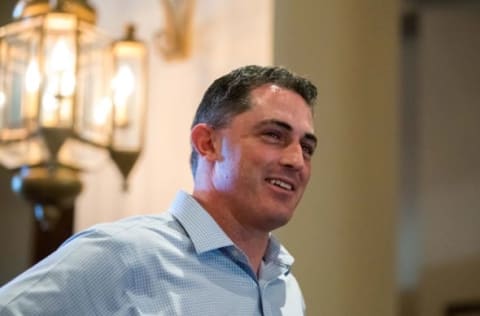
13. Colorado Rockies
The Rockies have been a team in limbo seemingly for a number of years. They weren’t quite at a point to compete, but yet they were hesitant to give up their elite players like Troy Tulowitzki and Carlos Gonzalez in trade.
The trade of Tulo was part of a big change within the system overall that has brought in a lot of elite talent for the Rockies, though a good portion of it is far away.
Elite prospects – I did consider a half dozen Rockies prospects as part of the 125, and three of them will figure prominently in the top 50 prospects in the game.
System depth in legit prospects – The Rockies have a good mix of upside and floor right now. Their higher-floor players are very solid, with plenty of guys beyond the top 10 that could be future lineup members or rotation pieces.
Proximity to majors of legit prospects – Four of the Rockies’ top 10 guys on my list made the majors in 2016, and it wouldn’t surprise me if at least one or two more from the list did the same in 2017, so they have a number of guys right on the cusp, but there are plenty of guys far away as well.
System reputation – The Rockies have been trying to figure out what works for pitching in Colorado for years, and it seems like they’ve decided that rather than going for sinker pitchers or going for guys who don’t throw curves or something, they’ll just get the best pitchers.
Now they have a system of elite-talent pitchers along with excellent guys who have already made the major leagues and are helping in the rotation or in the bullpen.
On the hitting side, their affiliates are in high-hitting environments and often ends up covering up weaknesses until the player gets to the bigs, but recent guys like Arenado, Story, and Dahl have had success in the majors once they arrived.
Top 5 Born 1991 or since (age 25 season this year)
1. Nolan Arenado
2. David Dahl
3. Jon Gray
4. Trevor Story
5. Brendan Rodgers
Next: #12
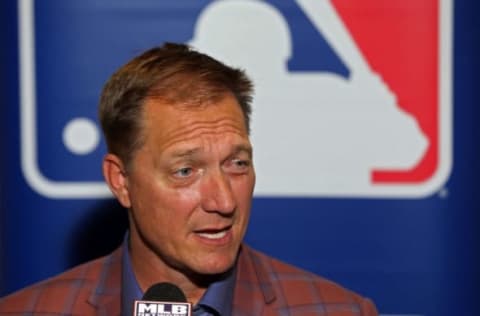
12. Texas Rangers
With former assistant GM A.J. Preller, the Rangers had one of the most elite Latin American reaches of any organization in the entire game. When Preller left for San Diego, the Rangers have still done well in that market, but they’ve seen a need to do better in the domestic market as well to cover the fact that they just can’t rely on only Latin players now.
They’ve seen some mixed bag of success in this so far, getting a lot of interesting reviews on their drafts as they’ve gone heavily after the ceiling, sometimes with extremely worrisome floor as well.
The Rangers have done a solid job in the Cuban market thus far, and that is one area that they do receive solid marks for their ability to scout and rate players.
Elite prospects – The Rangers only had four guys that I considered for my top 125, but three should factor strongly in the top 50-75 prospects. The system also has a number of elite athletes that could quickly explode up lists if they get things like strike zone recognition or consistent strike throwing under control.
System depth in legit prospects – The Rangers do have a number of guys who profile as legit MLB players, but they do typically have guys with low floors until the point when they establish their floor, which is when they jump quickly to the majors.
Proximity to majors of legit prospects – The Rangers saw four of their top five prospects reach at least AA in 2016. They have a number of solid players in AA/AAA currently. That all said, the majority of the depth of the system is in the lower minors.
System reputation – The Rangers have a reputation for taking guys with control issues and strike zone issues. They essentially push these guys forward regardless of those issues and hope for them to develop those skills at the upper minors.
So far their results have been hit or miss. Guys like Nick Williams were traded away before getting to the upper levels with Texas, but those guys often never got the strike zone figured out and it meant their high-level talent was never able to be utilized.
Top 5 Born 1991 or since (age 25 season this year)
1. Rougned Odor
2. Nomar Mazara
3. Jurickson Profar
4. Martin Perez
5. Joey Gallo
Next: #11
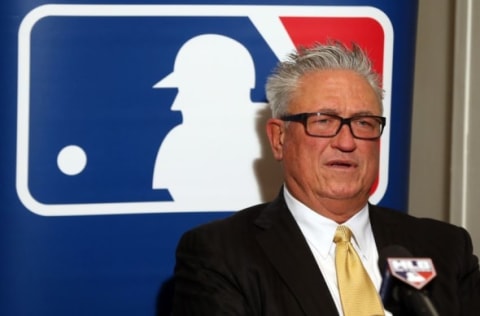
11. Pittsburgh Pirates
The Pirates have used their system well to take a small market and build a perennial contender with one of the best outfields and young rotations in baseball.
They certainly could be excused if they were lax in some other areas, but they’ve also done well in filling in those spots with timely pickups like J.A. Happ, who became a rich man after Pittsburgh helped him get on track on the mound.
The Pirates have discussed still making a further push for the 2017 season, and that could affect the standing of their system, but right now, the depth and elite players in their system has them quite high in ratings.
Elite prospects – The Pirates have five guys I considered for the top 125, but of those, 3 are locks for the top 50, which is an impressive top of the system. The Pirates also drafted and signed a few guys this season who very quickly could ascend to that same level.
System depth in legit prospects – The Pirates have been able to bring up a number of starters in recent seasons that provided multiple solid starts for the team, and that’s something they definitely have in droves in their farm system. Offensively, the depth isn’t as strong, but they do have some very solid pieces on the way.
Proximity to majors of legit prospects – The Pirates saw three of their top 10 guys in the majors in 2016, and it’s very feasible that two others make it there in 2017. There are a number of very solid bullpen and bench pieces in AA/AAA that should be part of the 2017 team as the season works on as well.
System reputation – The Pirates’ pitching reputation may be as good as any team in baseball from top to bottom. Certainly Ray Searage gets plenty of praise at the big league level, but the team has really done an exceptional job of putting together a program from top to bottom that really brings out the best in the arms in their system.
Offensively, they’ve done well in developing exceptional athletes, though if there’s a criticism of the system, it’s their lack of ability to develop power within the system. Part of that is the player base they’ve had to work with, and you cannot create power when you don’t have power players.
Top 5 Born 1991 or since (age 25 season this year)
1. Gregory Polanco
2. Jameson Taillon
3. Tyler Glasnow
4. Austin Meadows
5. Mitch Keller
Next: #10
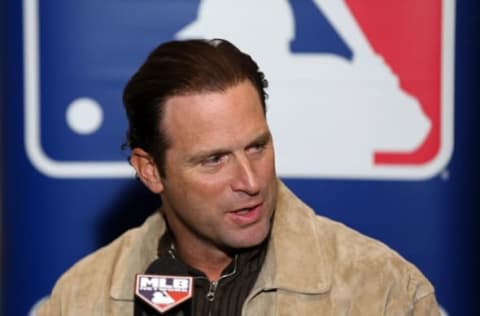
10. St. Louis Cardinals
The Cardinals found themselves on the outside looking in on the postseason, which was a very awkward spot to be for sure for their organization. Through plenty of injury and a lack of depth at the top end of the system, the Cardinals may have for the first time found themselves not having the guys needed to fill in.
That doesn’t mean that plenty of guys didn’t offer assistance. Aledmys Diaz had a very solid season when Jhonny Peralta was hurt to start the season and Kolten Wong struggled with the bat. Seung-hwan Oh was a revelation as closer when Trevor Rosenthal, and Matthew Bowman pitched the most relief innings of anyone but Oh as a Rule 5 pick.
The Cardinals have gone about adding to their team in a way that can help that depth issue this offseason, picking up major league ready pitching when they moved Jaime Garcia to Atlanta and signing bullpen help as well as a solid center fielder in Dexter Fowler.
Elite prospects – The Cardinals had a half dozen guys I considered for my top 125, but the first two guys I declined to include could very well end up moving up in a hurry as well, so the system has some very solid pieces overall.
System depth in legit prospects – The Cardinals saw their depth in guys wane last season, and they’ve done an excellent job drafting guys who will be major league ready quickly in last season’s draft as well as acquiring more depth in those guys in trade.
Proximity to majors of legit prospects – Of their top 10 prospects, three made appearances in the major leagues in 2016 and one other reached the upper minors in 2016.
System reputation – The Cardinals have a very good reputation with college arms in developing them quickly and effectively to get guys to the upper minors as at least a fill-in starter for the big league club in a hurry.
The Cardinals have also been known for their development of guys who are “bat-first” players out of college. Many of them are guys like Allen Craig or Matt Carpenter, who can hit at some position, but they just don’t have a definite position. Their work at guys like that has led to a number of players coming up over the years who were less heralded as offensive prospects but producing well at the major league level.
Top 5 Born 1991 or since (age 25 season this year)
1. Carlos Martinez
2. Alex Reyes
3. Stephen Piscotty
4. Randal Grichuk
5. Michael Wacha
Next: #9
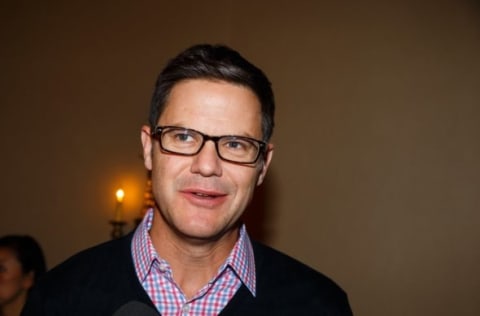
9. Toronto Blue Jays
Toronto has built up their major league team into contenders with an offense to envy and young pitching that is also the dream of many in the league.
They found their offense through a number of cast-offs from other organizations in guys like Jose Bautista and Edwin Encarnacion, but they’ve seen some struggles in developing their own offensive players, especially power guys. That could be soon to change, however.
The Blue Jays have done very well in building up their base of young pitching as well as finding guys who were less appreciated in their previous homes and working with them well to put together a deep pitching staff.
Elite prospects – The Blue Jays have one guy who’s a likely top 25 guy, but they also have 7 guys who are legit top 125 guys, and I even considered an eighth for the list as well.
System depth in legit prospects – While there is plenty of elite talent in the system, not a lot of it has really established a solid floor yet, so this is the one thing that really keeps the Blue Jays out of the “elite” group in my book right now.
Proximity to majors of legit prospects – Three of the top 10 Blue Jays prospects made the upper minors in 2016, but really the lion’s share of the best prospects in the system are still in the lower levels of the system.
System reputation – The Blue Jays have received high marks for working with high-velocity arms and helping them become pitchers rather than throwers, and they’re seeing a number of those types break through at the lower levels right now that could jump forward in a hurry in 2017.
The hitting side has struggled to see consistent production from the system, especially in power production, but Rowdy Tellez should definitely change that going forward. There are a number of other very intriguing hitting prospects that are showing an ability to drive the ball in the full-season leagues for the Blue Jays, so they could be bucking this reputation currently.
Top 5 Born 1991 or since (age 25 season this year)
1. Aaron Sanchez
2. Marcus Stroman
3. Roberto Osuna
4. Vladimir Guerrero, Jr.
5. Devon Travis
Next: #8
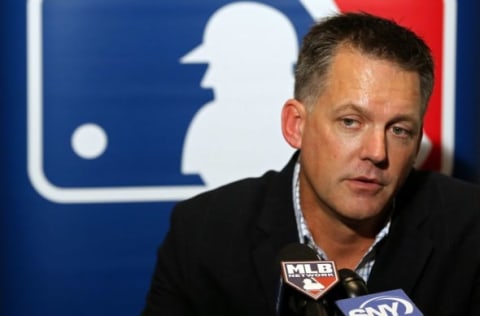
8. Houston Astros
No one has yet quite done the scorched earth approach to rebuilding quite like the Houston Astros did. They’ve come out on the other side of it for sure, making the playoffs in 2015 and competing all season in 2016.
The Astros have used an elite farm system to help get where they are, but their system has been thinned by recent trades to be just a notch below the truly elite systems overall. Trades like the one they made for Carlos Gomez and Mike Fiers and for Ken Giles definitely stripped talent from the depths of the system.
That said, this is still a very exciting system that is definitely right on the cusp of being in that elite group.
Elite prospects – Really, the Astros only have one top 25 prospect, but their system could have as many as 8 or 9 guys when I finalize the top 125 as I considered 10 players from the system.
System depth in legit prospects – The Astros have seen very solid production from a number of players throughout their system as they’ve come up to the major league roster, both in the rotation and in the every day lineup. They still have guys on the farm who can do just that.
Proximity to majors of legit prospects – Of their top 10, two played in the majors in 2016 and half played in the upper minors in 2016. They also have a pair of very deep rosters at AA/AAA that include a number of players who are no longer prospect-eligible, but are still building their value to the major league team.
System reputation – The Astros have really developed a significant pipeline of talent from their lowest levels on up.
The Astros have had one knock on their organization, and it’s been in their financial dealings. The team has been perhaps too soon to announce deals when they haven’t completed the medical portions of deals, which was an issue in the Brady Aiken draft and also in a couple of international deals since. While those are limited incidents among hundreds of transactions in the last few years, when I ask about the team’s reputation in the game, that’s the first thing brought up by many people, so it’s still prevalent.
Houston has a solid ability to develop bats, getting excellent production from guys in the minor leagues and translating them to big leaguers, either on the big league roster or through trade.
Top 5 Born 1991 or since (age 25 season this year)
1. Carlos Correa
2. Alex Bregman
3. Lance McCullers
4. Kyle Tucker
5. Joe Musgrove
Next: Nationals Top 10 Prospects
Agree? Disagree? Fire off in the comments, and let’s discuss!!